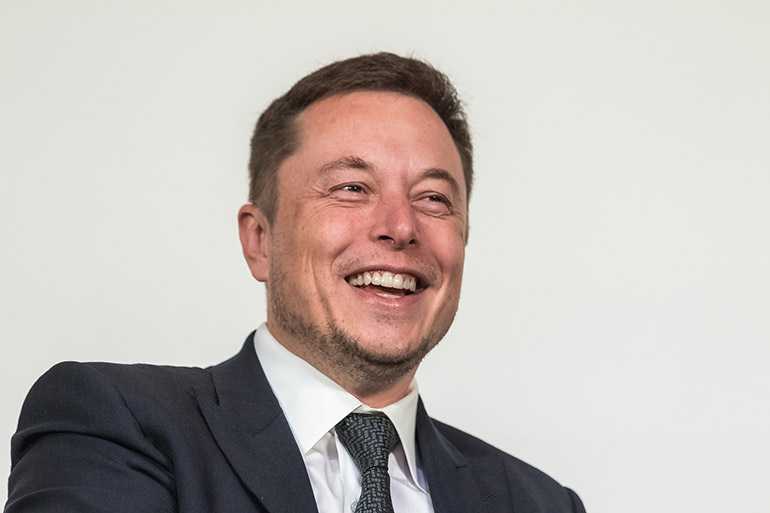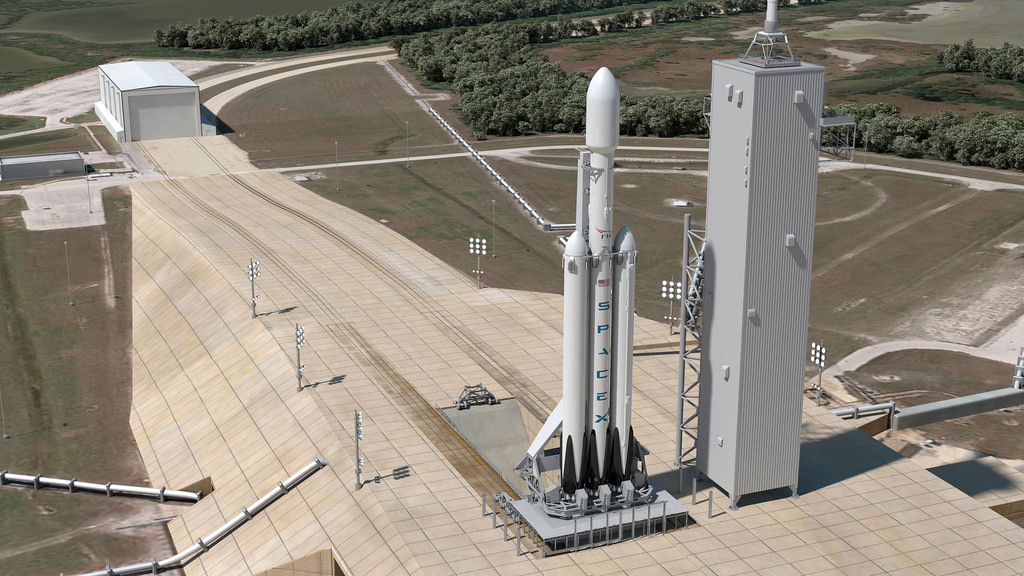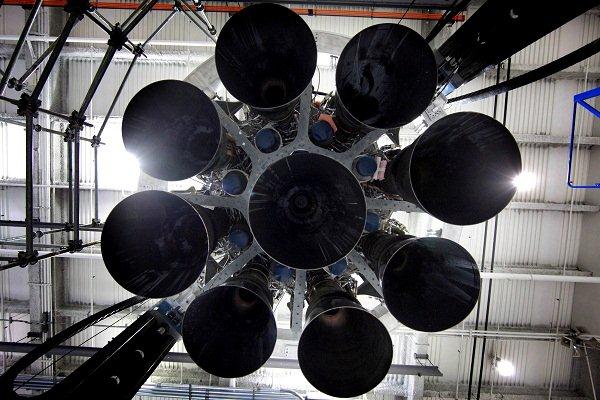'Major Pucker Factor': Will SpaceX's Falcon Heavy Ace Its Maiden Launch?

SpaceX says its Falcon Heavy, which is slated to make its maiden launch in November from the historic Pad 39A at NASA's Kennedy Space Center (KSC) in Florida, will be the world's most powerful operational rocket.
No matter how you look at it, the reusable Falcon Heavy is a big deal. Its first stage is composed of three Falcon 9 nine-engine cores, adding up to a total of 27 Merlin engines that will generate 5 million lbs. of thrust at liftoff.
The mega-lifter was designed from the outset to propel humans into space, and it could eventually fly missions with crew to the moon and Mars. But the first flight may not go so well, according to SpaceX founder and CEO Elon Musk. [SpaceX's Falcon Heavy Rocket in Images]
"There's a lot that could go wrong there. I encourage people to come down to the Cape to see the first Falcon Heavy mission; it's guaranteed to be exciting," Musk said in July at the 2017 International Space Station Research and Development conference in Washington, D.C. (The "Cape" is Cape Canaveral, where KSC is located.)
"There's a lot of risk associated with the Falcon Heavy … a real good chance that [the] vehicle does not make it to orbit," he added. "I want to make sure to set expectations accordingly."
27 engines
Musk mentioned several specific reasons why the Falcon Heavy's maiden flight may not go perfectly. One is the need for all 27 orbit-class first-stage engines to light at the right time. Another is the stress that the first stage's central "core" will experience during liftoff; the loads on the rocket, from aerodynamic forces to vibration and acoustic issues, will be quite high, he said.
"I hope it makes it far enough away from the pad that it doesn't cause pad damage," Musk said. "I would consider even that a win, to be honest. Yeah, major pucker factor, really; that's, like, the only way to describe it."
Breaking space news, the latest updates on rocket launches, skywatching events and more!
Musk stressed that he believes the Falcon Heavy will be a great vehicle, but he added that there may be some kinks to work out, especially given how challenging the rocket's development has been.
"It just ended up being really way, way more difficult than we originally thought," Musk said. "We were pretty naive about that."
Synchronized and stabilized
Musk's caution about the success of the maiden flight is justified, said Jim Cantrell, CEO and co-founder of Vector, a microsatellite space launch company based in Tucson, Arizona.
Cantrell has a history with SpaceX; he played a fundamental role in founding the company and served as its first vice president of business development.
Igniting a cluster of Falcon Heavy engines at the right time is a challenge, with the motors needing to be synchronized and stabilized, Cantrell said.
"It may look instantaneous to the eye, but in reality, you've got this wave of ignitions that are happening," Cantrell said. "The ignitions start inside the engines and not outside, and it's still a wave of flame fronts racing towards the rocket nozzle exit. If one engine doesn't ignite internally as it should, you will get a flame front that travels back into the engine."
"That creates a pressure spike, and that can cause what we call 'rapid unscheduled destruction' — and that's bad," Cantrell said. [The World's Tallest Rockets: How They Stack Up]
Furthermore, the large number of Falcon Heavy engines requires a great deal of plumbing, Cantrell said. Opening and closing engine valves causes engine vibrations, as does the movement of fluid through the pipes.
"They all can resonate together," Cantrell said. "So Elon is worried about all the right things. It's an enormous issue that's worthy of going well out of your way to try and avoid."
"I don't think it's out of anybody's belief that Falcon Heavy will be successful. Nor will it be shocking if it's a failure," Cantrell said of the first flight. "I would see success being a reflection of a system engineering maturity at SpaceX and a sign that the company is starting to regularize their operations, which takes time to do."
Lined-up cores
Rand Simberg is a consultant in space business and technology, and a self-described "recovering aerospace engineer" based in Jackson Hole, Wyoming. He's also the author of the book "Safe Is Not an Option: Overcoming the Futile Obsession with Getting Everyone Back Alive That Is Killing Our Expansion into Space" (Interglobal Media LLC, 2013).
Like Cantrell, Simberg said the number of engines on the Falcon Heavy could be an issue.
"First, we know from its track record that having nine engines close together isn't a problem for Falcon 9," he told Space.com. "But while they've probably attempted to simulate it, SpaceX cannot fully understand the interaction of three times as many engines on three lined-up cores until they actually fire them all at once … and won't know for sure until the first time they do so when it's on the pad this fall. That may be what has Elon concerned about potential pad damage."
Simberg also identified another possible issue: schedule reliability.
"SpaceX has aborted launches of the Falcon 9 when one or more of the engines was indicating performance issues on ignition," he said. "Three times as many engines means a lot higher probability of having an issue with one of them."
Reason for optimism
But such potential pitfalls don't doom the first flight to failure, experts stressed.
"I'd give the Falcon Heavy a high probability of working" on the first try, said Marshall Kaplan, chief technology officer for Launchspace in Bethesda, Maryland. He has participated in several launch-vehicle and satellite developments and has served as chief engineer on two launch-vehicle programs.
Although the Falcon Heavy is complicated, each of its engines is fairly inexpensive compared to a Saturn V F-1 or a space shuttle main engine, Kaplan said. Musk has "figured out a way to economically put these relatively cheap engines together and make the whole thing a little more cost-effective," he added.
There is still uncertainty about the loads the rocket will experience, Kaplan said. "But frankly, based on his previous success, I would expect it to work," he said.
With the first few flights of any new launcher, "you are going to instrument the rocket up and down with sensors and have a lot of telemetry channels down to the ground," Kaplan noted. "You want to know everything from stress, to temperatures and voltages, propellant flow — and also have all the guidance and navigation information coming down. So if something goes wrong, you'll know why."
Once the Falcon Heavy gets up and running, it will be a competitor on the world stage of big boosters, which include United Launch Alliance's Delta IV and Atlas V, as well as Europe's Ariane 5, and the larger family of Russian and Chinese boosters, Kaplan said, adding that Musk is "already an established competitor."
"Musk's ultimate goal is Mars," Kaplan added. "So a lot of what he's doing is pointed in that direction, so to speak. Falcon Heavy is a building block towards Mars." [SpaceX's Interplanetary Transport System for Mars Colonization in Images]
Fueling a revolution?
"It's a new stage in the spaceflight revolution that Elon has kicked off," Simberg said. Getting Falcon Heavy online would (at least ultimately) lead to another drop in launch prices, he added.
"They [SpaceX] will continue to charge whatever the market will bear as long as they can, and pocket the difference in profit," Simberg said. But the marginal operating costs of a vehicle that can toss many tens of thousands of pounds of payload into orbit — while fully recovering and reusing most of the hardware — "will eventually allow huge reductions in price to the launch customers as well, particularly when they're pressured by competition from Blue Origin's New Glenn and others," he said.
It could start to finally approach the magical number of $100 per pound to orbit, Simberg said. "Since the dawn of the space age 60 years ago this fall, the biggest barrier to progress in space has been the high price of launch."
There's another fallout factor from an operational Falcon Heavy, Simberg said. "The political viability of NASA's Space Launch System — that will cost literally billions of dollars per flight once every year or two — will become increasingly untenable," he concluded.
Leonard David is author of "Mars: Our Future on the Red Planet," published by National Geographic. The book is a companion to the National Geographic Channel series "Mars." A longtime writer for Space.com, David has been reporting on the space industry for more than five decades. Follow us @Spacedotcom, Facebook or Google+. This version of this story was posted on Space.com.

Leonard David is an award-winning space journalist who has been reporting on space activities for more than 50 years. Currently writing as Space.com's Space Insider Columnist among his other projects, Leonard has authored numerous books on space exploration, Mars missions and more, with his latest being "Moon Rush: The New Space Race" published in 2019 by National Geographic. He also wrote "Mars: Our Future on the Red Planet" released in 2016 by National Geographic. Leonard has served as a correspondent for SpaceNews, Scientific American and Aerospace America for the AIAA. He has received many awards, including the first Ordway Award for Sustained Excellence in Spaceflight History in 2015 at the AAS Wernher von Braun Memorial Symposium. You can find out Leonard's latest project at his website and on Twitter.





